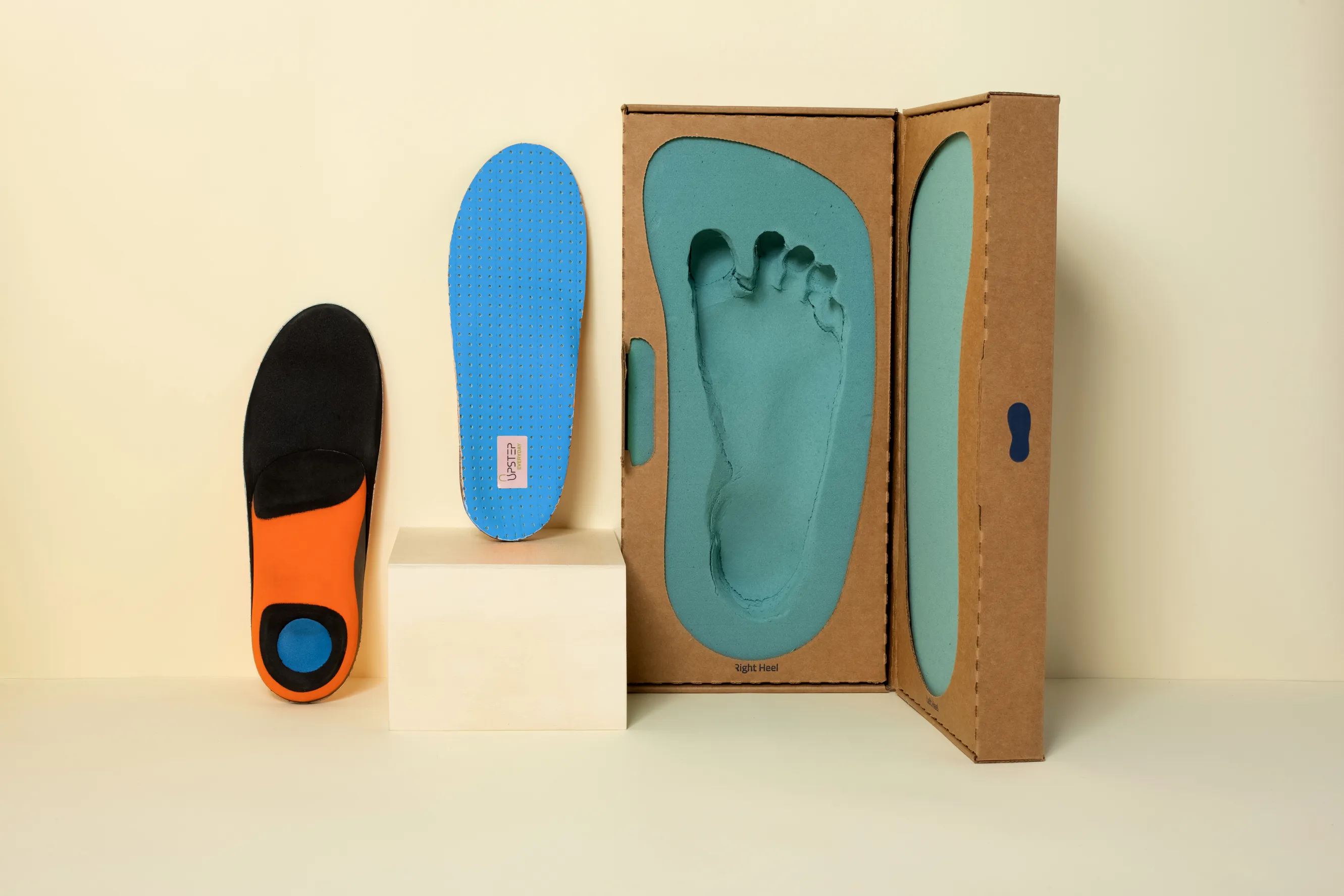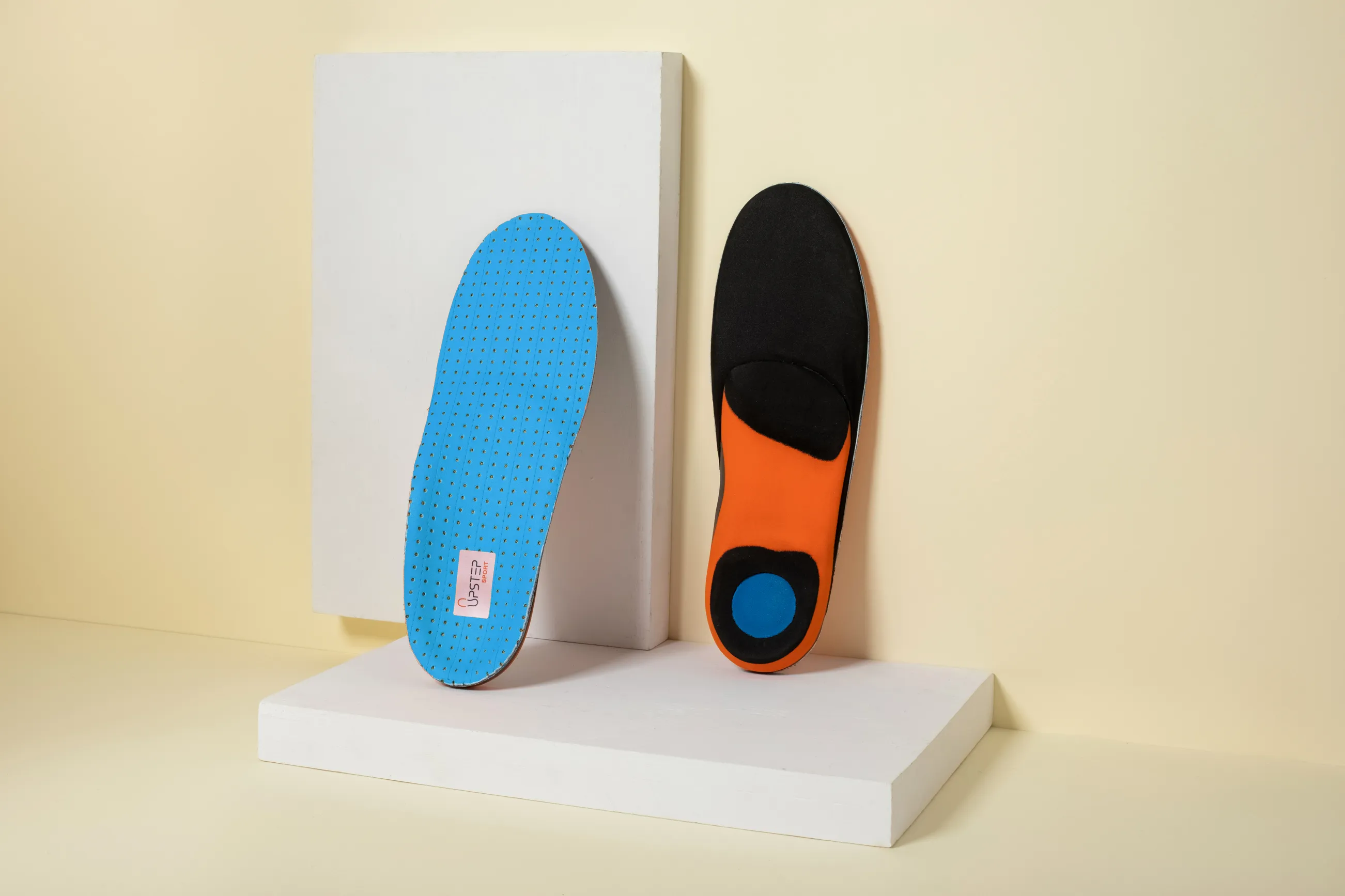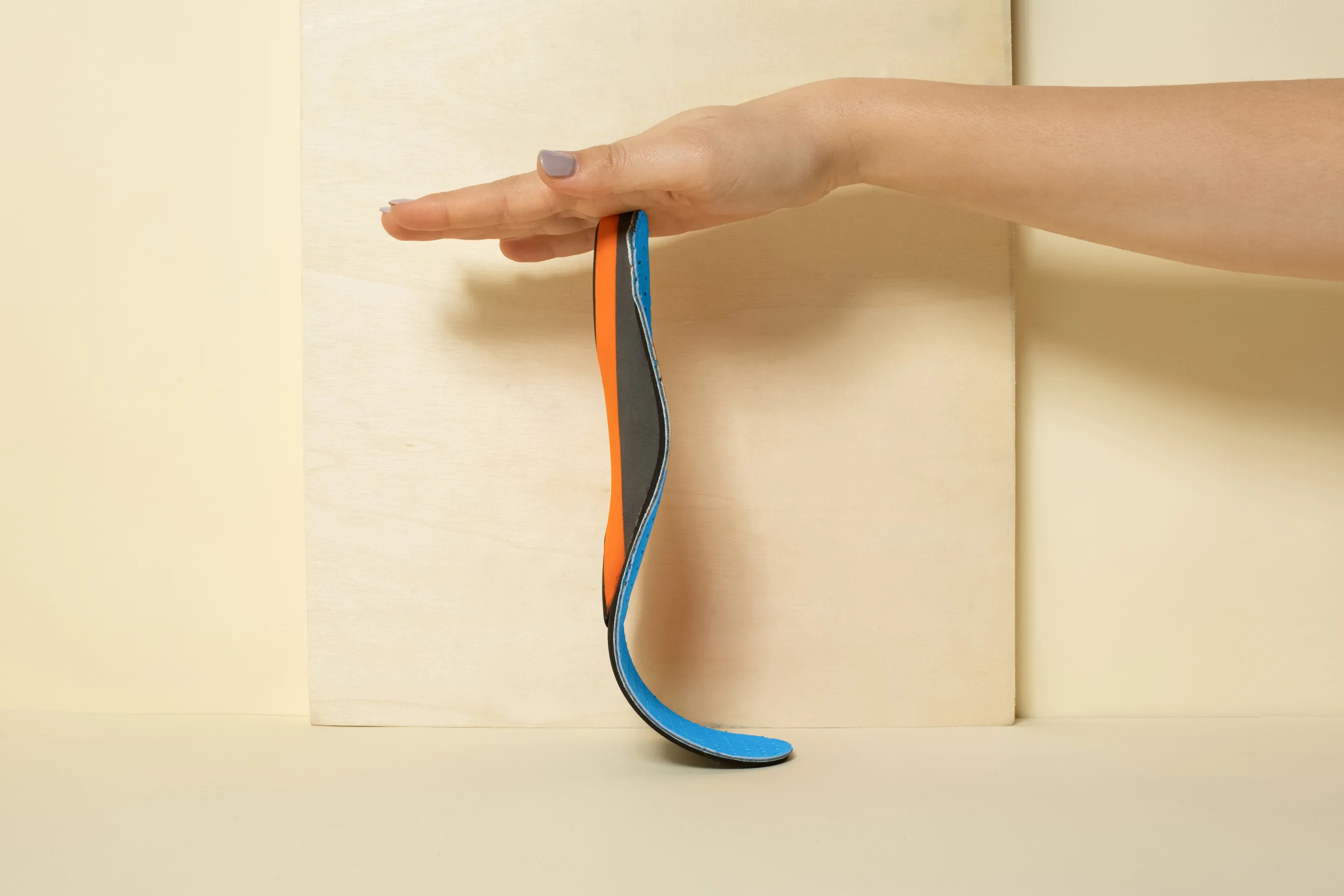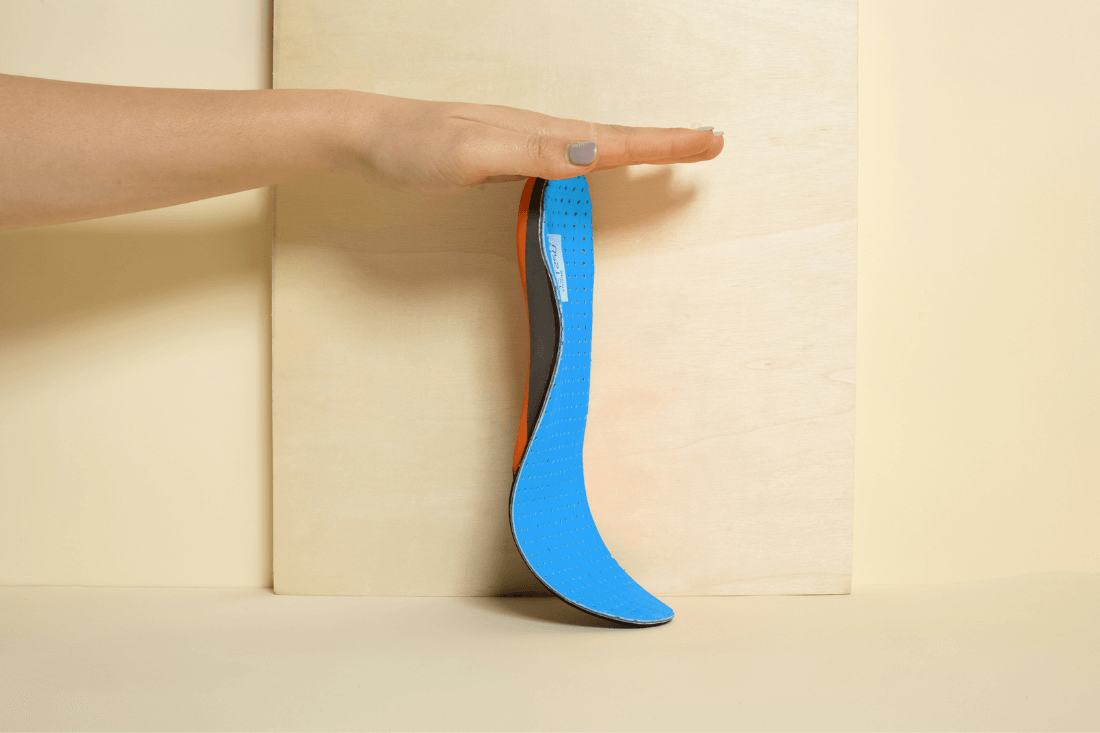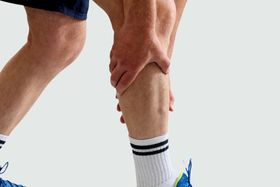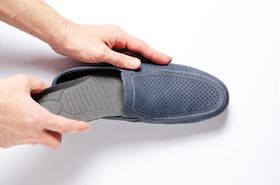Best Orthotics for Midfoot Arthritis Pain Relief
Get the top orthotics designed to relieve midfoot arthritis pain, offering optimal support, cushioning, and stability.
Published October 14, 2024

Every step sends a jolt of pain through your foot, ruining what would be a relaxing walk. Midfoot arthritis is one of the many culprits. It's a condition that severely limits your mobility and quality of life.
It affects more than your feet; it can change the way you walk, causing pain in your knees and hips. But there's hope. Custom-made insoles are a tried-and-tested way of treating this condition, and we've prepared the best ones that mold to your foot's unique biomechanics.
» Reduce midfoot arthritis pain with personalized orthotics
Why Wear Custom Orthotics for Midfoot Arthritis?
Midfoot arthritis affects the joints at the centre of your foot, especially the tarsal bone connections. [1] Approximately 12% of people aged 50 and over have it, especially women and those in routine occupations like plumbing and electrical work. [2] Rheumatoid arthritis, degenerative diseases, trauma, and excessive wear are all the main culprits behind this condition.
You can recognize midfoot arthritis if you have central soreness, edema, stiffness, or trouble with prolonged standing or walking. These symptoms can lead to reduced foot function and pain, so consult your podiatrist if you have any concerns.
Not treating this foot disorder on time deteriorates your joints, reducing their capacity to absorb shock and adjust to different surfaces. As a result, your gait pattern changes, affecting the way you walk. You may start feeling pressure on other areas, such as your heel or forefoot, which creates even more issues.
Custom vs. Store-Bought Insoles for Midfoot Arthritis
Manufacturers mold custom orthotics to your foot, providing targeted support to the midfoot joints and correcting specific misalignments. In contrast, over-the-counter alternatives aren't personalized, so they may not address the condition properly.
While more affordable upfront, over-the-counter insoles often offer only temporary or limited pain relief and may wear out quickly, requiring frequent replacement. Custom orthotics are more expensive initially but typically feature durable materials designed for long-term use.
If you're struggling with severe midfoot arthritis, the personalized support and durability of custom orthotics justify the higher cost. But if you only have mild discomfort, choose over-the-counter insoles.
» Read our in-depth review of custom vs. over-the-counter orthotics
Best Insoles for Midfoot Arthritis Upstep | Fitness Walking & Hiking Orthotics
Upstep's Fitness Walking and hiking Orthotics are designed for walking and hiking enthusiasts. Created from a mold of your foot, they offer personalized support and comfort, improving alignment and balance. These orthotics provide targeted arch support and shock absorption, reducing strain on feet, ankles, knees, hips, and lower backs during extended walks or hikes.
The insoles are meant for high-activity use and feature durable materials to withstand outdoor adventures. They are helpful for people with foot issues like midfoot arthritis, plantar fasciitis, or flat feet. The orthotics also feature breathable materials to keep feet dry and comfortable.
Why Choose Upstep | Fitness Walking & Hiking Orthotics?
Recent studies indicate that custom orthotics like the Upstep's Fitness Walking & Hiking Orthotics can be useful in treating midfoot arthritis. [3] Participants split into two groups, getting either genuine or sham insoles. After 12 weeks, biomechanical data showed changes in hindfoot positioning and increased midfoot pressure for people who wore proper orthotics.
Our custom orthotics help alleviate arthritis symptoms by supporting the arch, keeping the feet aligned, and easing the pressure on the midfoot to keep you stable and minimize overuse. Special padding made of shock-absorbing gel or EVA foam also softens the impact. It stops the symptoms from getting worse by lowering the stress transferred to the midfoot.
How to Get the Most Out of Your Upstep's Fitness Walking & Hiking Orthotics
Start by increasing wear time so your feet can acclimate to the orthotics. You should have no pressure spots, and the insoles should fit comfortably in your shoes. Just in case, keep an eye out for any changes, pain, or discomfort, and seek medical advice if you notice anything out of the ordinary.
After about four to six weeks, you should see improvements in symptoms. The exact timeframe depends on a number of variables, including:
- Degree of the condition
- Fit and quality of the orthotics
- Your reaction to the insoles
- Compliance with our instructions
If you continue wearing Upstep's Fitness Walking & Hiking Orthotics regularly, symptoms of midfoot arthritis will slowly subside. To get the most out of them, combine them with physical therapy and consult a podiatrist if you experience pain.
» Learn how to treat shin splints with ice and heat
Finding Relief: Best Orthotics for Midfoot Pain
Choosing the best orthotics for midfoot arthritis is a personalized process. That's why we will create a personalized imprint that aligns with your feet's contours.
Your Upsteps will relieve pressure pressure on sensitive areas, including the midfoot, by redistributing weight more evenly across the foot. The arch support integrated into the orthotics is crucial for reducing strain on the midfoot, which can be particularly beneficial for those suffering from arthritis.
Overall, Upstep's custom orthotics not only aim to relieve pain but also promote better biomechanics, potentially slowing the progression of arthritis-related issues in the feet.ShareRewrite
If you're experiencing midfoot arthritis pain, it's essential to consult with a podiatrist or other qualified healthcare provider. They can accurately diagnose your condition, assess your specific needs, and recommend appropriate treatment options, including orthotics.
References:
- H. Kurup and N. Vasukutty, “Midfoot arthritis- current concepts review,” Journal of Clinical Orthopaedics and Trauma, vol. 11, no. 3, pp. 399–405, Mar. 2020, doi: 10.1016/j.jcot.2020.03.002. Available: https://pubmed.ncbi.nlm.nih.gov/32405198/
- M. J. Thomas et al., “The epidemiology of symptomatic midfoot osteoarthritis in community-dwelling older adults: cross-sectional findings from the Clinical Assessment Study of the Foot,” Arthritis Research & Therapy, vol. 17, no. 1, Jul. 2015, doi: 10.1186/s13075-015-0693-3. Available: https://pubmed.ncbi.nlm.nih.gov/26166410/
- J. Halstead et al., “Foot orthoses in the treatment of symptomatic midfoot osteoarthritis using clinical and biomechanical outcomes: a randomised feasibility study,” Clinical Rheumatology, vol. 35, no. 4, pp. 987–996, Apr. 2015, doi: 10.1007/s10067-015-2946-6. Available: https://pubmed.ncbi.nlm.nih.gov/25917211/
Disclaimer: The information on this blog is for educational purposes only and is not a substitute for professional medical advice. Upstep does not provide medical diagnosis or treatment. While qualified healthcare professionals create our content, it's essential to consult with your healthcare provider for any foot or ankle concerns you may have.








